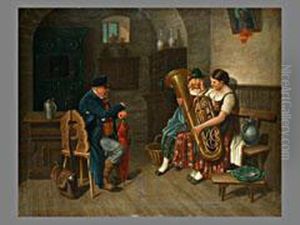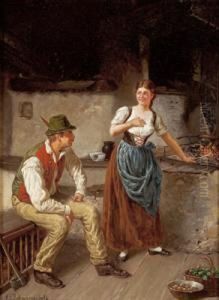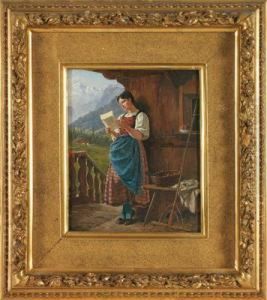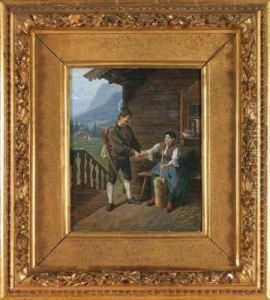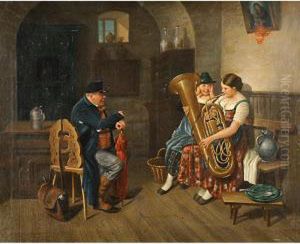Adolf Ritter Von Schwarzenfeld Paintings
Adolf Ritter von Schwarzenfeld was an Austrian artist born on April 13, 1832, in Vienna. His work primarily belonged to the Romantic period, reflecting the broader European trends in art, literature, and philosophy of that time. Schwarzenfeld was known for his landscape paintings, which often featured dramatic lighting and a sense of the sublime, a key characteristic of Romantic art. He was also known for his historical paintings and was part of a movement of artists who sought to evoke emotion through depiction of nature and historic events.
Schwarzenfeld received his artistic training at the Academy of Fine Arts Vienna, where he was influenced by the teachings of prominent Austrian artists of the period. His education was traditional, emphasizing classical techniques and subjects, which he later adapted to express the Romantic ideals of individualism and emotional depth. Throughout his career, Schwarzenfeld exhibited his works in various venues, including the prestigious Vienna Künstlerhaus, gaining recognition among art critics and patrons.
During his lifetime, Schwarzenfeld was not only a painter but also held the title of 'Ritter,' indicating his status as a knight, which was a hereditary knighthood in the Austro-Hungarian Empire. This title was often bestowed upon individuals who had served the empire with distinction or who had achieved considerable success in their professional fields, including the arts.
Schwarzenfeld's works were marked by a mastery of technique and a keen observation of natural and architectural forms. He had a particular interest in the interplay of light and shadow, which he used to create mood and atmosphere in his paintings. His landscapes and historical scenes are remembered for their detailed realism and romantic idealization, which resonated with his contemporaries and influenced the art of the region.
Adolf Ritter von Schwarzenfeld's contributions to Austrian art were part of a larger European artistic movement that sought to capture the emotional and spiritual experiences of individuals and societies. His death on February 14, 1914, came just before the outbreak of World War I, a period that would usher in dramatic changes in the political, social, and artistic landscapes of Europe. His legacy is preserved in the collections of various museums and in the history of 19th-century Austrian art.
